Bit Graves - Creating cover art and hydra videos for Murmur
This is part of a series about creating our album. To learn about how we recorded it, see the previous part.
As we prepared to release our second album Murmur, we collaborated with our friend Jimmy Lee to create some visual art to accompany the music. For as long as we’ve known Jim, he has been particularly interested in the presentation and construction of words and text. (For example, he created Reading Supply, where we publish our writing.) Our album contains no intelligible lyrics, nor any representative imagery whatsoever. Nonetheless, when Jim sent us some possible directions for the cover art, he made some compelling ideas constructed predominantly out of text.
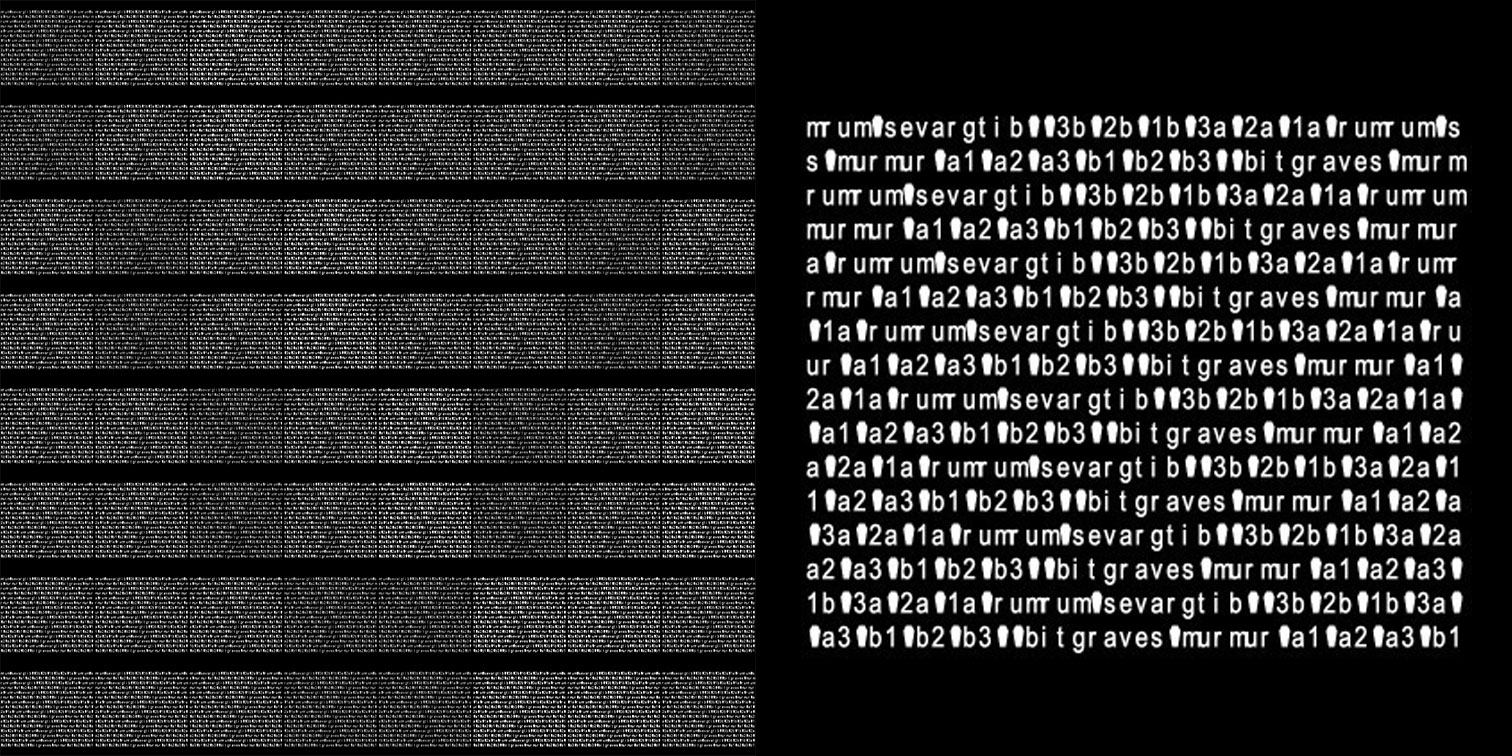
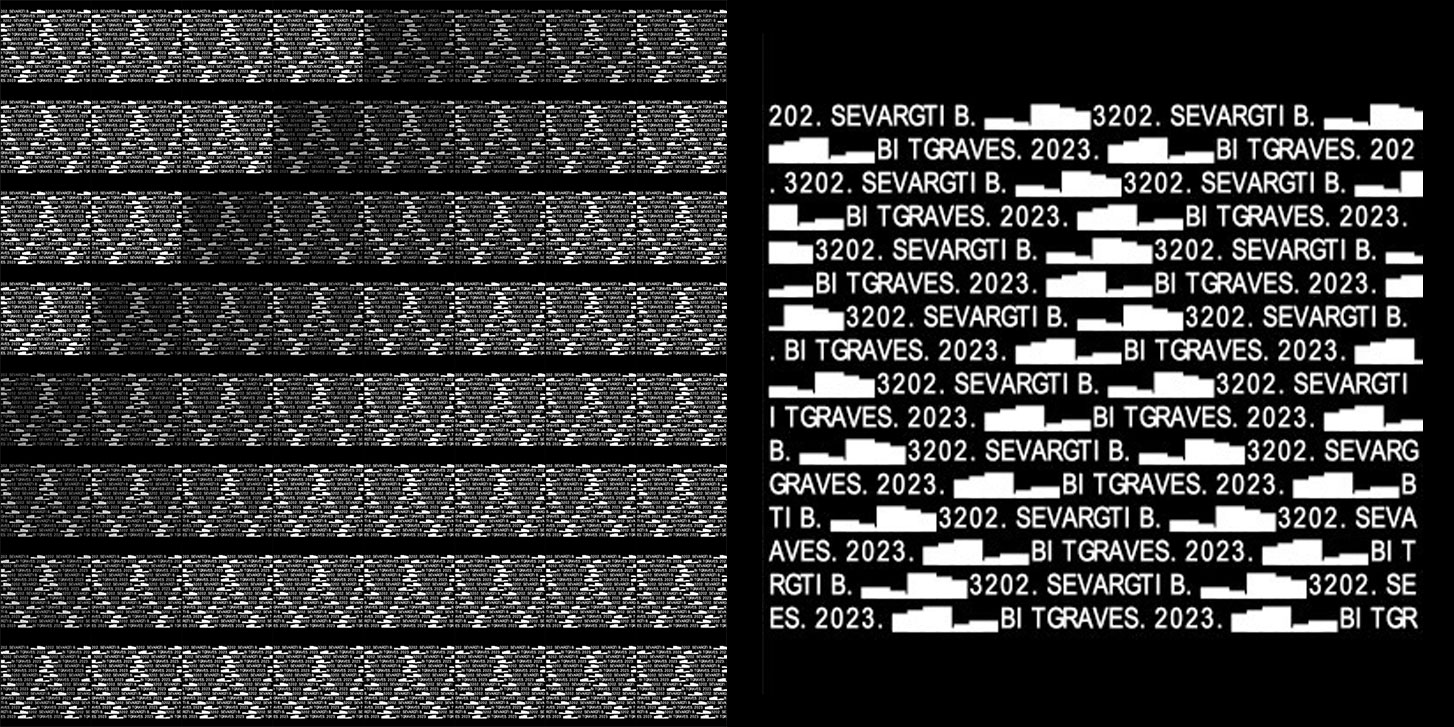
In these ideas, Jim used text for its shape. His work features a giant block composed of our band name stacked and repeated so densely as to abandon legibility and become a shimmering monolith, with the moiré of differing character densities creating ripples and implied diagonals. The words are a wash of fragments with no pretense of conveying useful information. These ideas felt like a great match with our music.
After some back-and-forth, Jim came up with another version— the final— which diffuses the colors like an oversaturated CRT viewed at point blank. Afterimages of disintegrated neon only hint at the original glyphs.
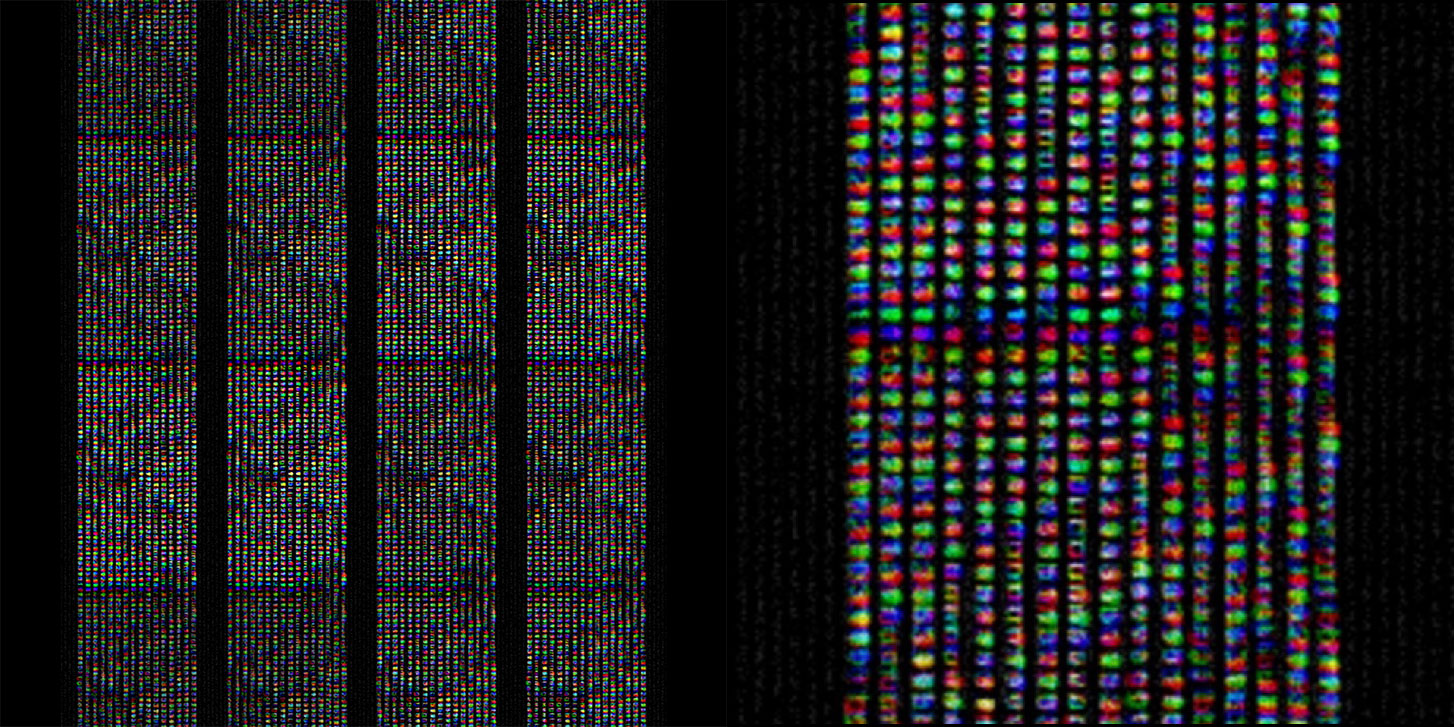
When the time came to promote the release, we knew we wanted a body of related art, possibly videos, in the same universe as the cover. We already had some familiarity with Hydra, a video synthesis tool for programming live graphics, and we saw an opportunity to create some algorithmic animations.
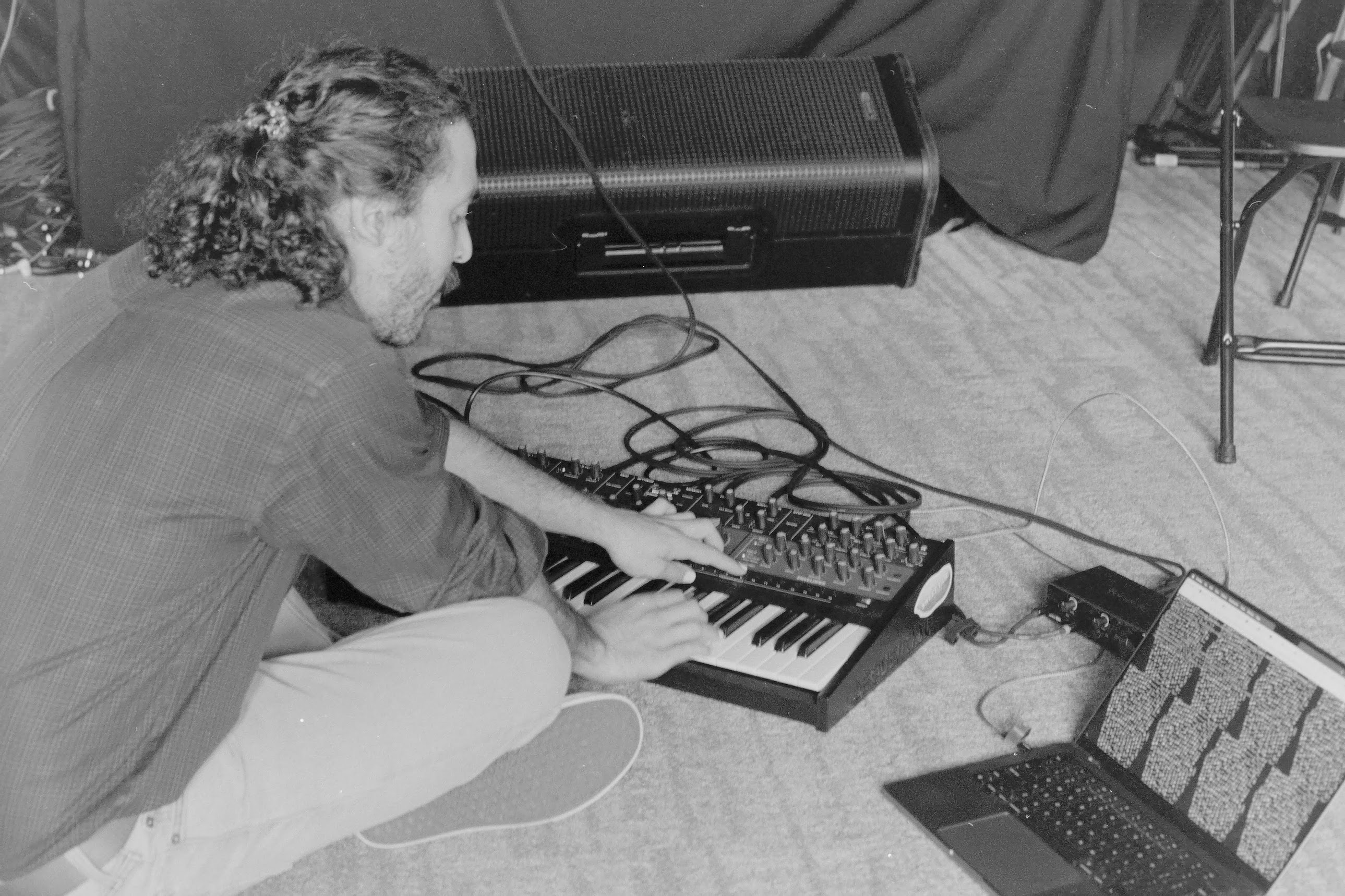
In order to stay true to Jim's cover, we began by importing his individual blocks of text into Hydra. We discovered that we could multiply the shape of the text onto a scrolling copy of itself to create a morphing paragraph of non-letters. Finally, we stacked those twinkling squares into a grid— similar to Jim's assembly— and proceeded to twist, warp, and evolve the grid over time. In particular, Hydra can also respond to audio input, allowing us to create designs that react to the music.
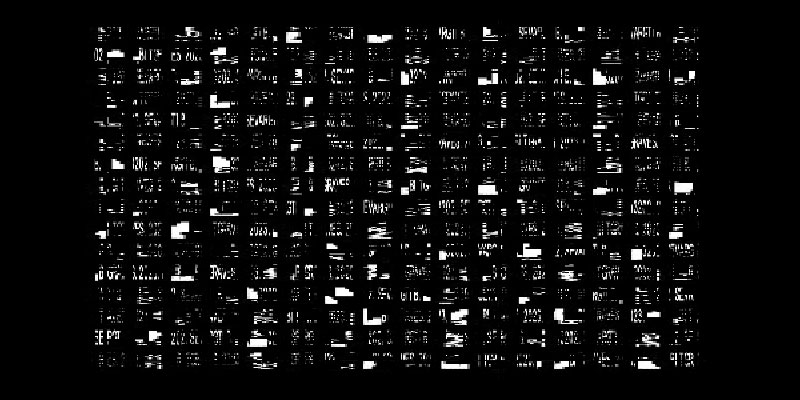
One unexpected challenge was our discovery that certain animations using high-contrast texture and color turn out terribly when compressed for YouTube. In our case, not even in a cool glitchy way. So part of our process included some trial-and-error to learn how to cooperate with the encoder. This is one reason we decided to opt for pure black and white.
The original intent was to produce a set of 30-second clips set to music to share on social media. People seemed to enjoy the first short clips, so we decided to go beyond 30 seconds and assemble a visualization for a full track from the album. We picked one called pluck2, with ascending ambient gestures and a long crescendo.
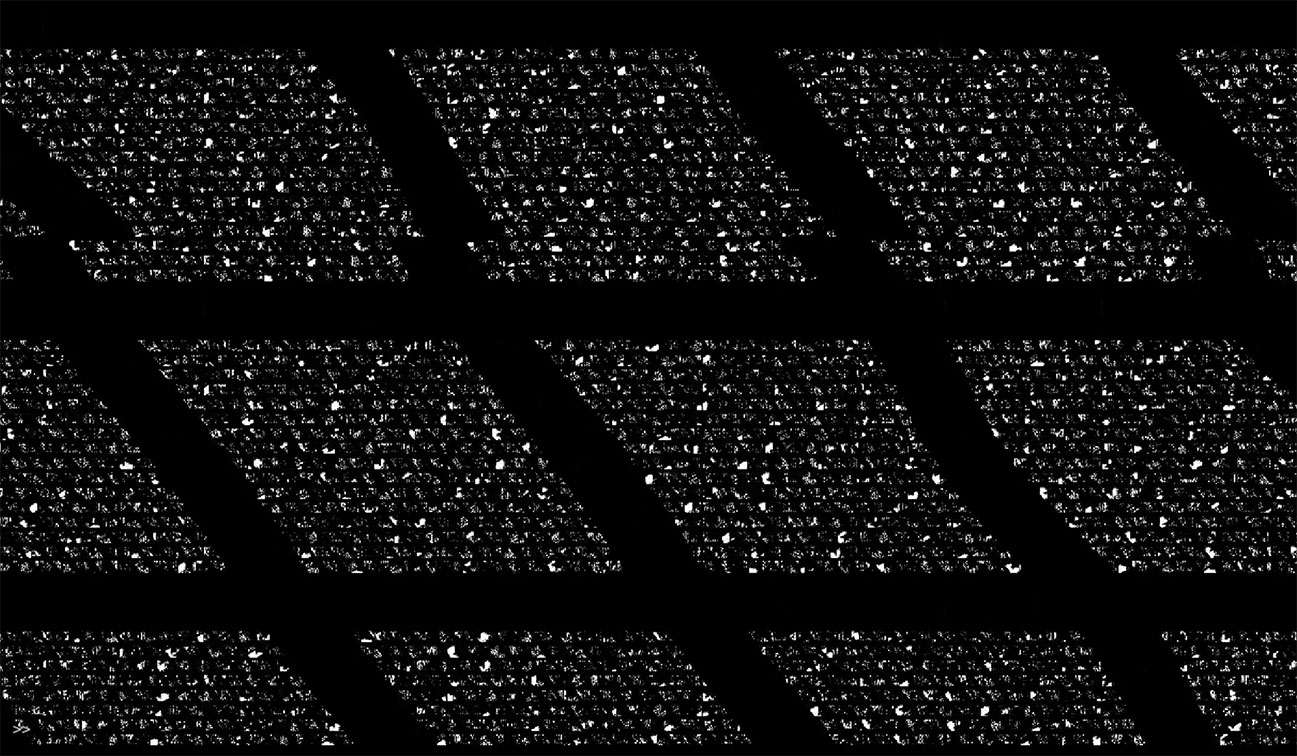
The captured visualizer for pluck2 (YouTube) and the hydra repl that created it.
Ben live-performed changes to the Hydra code and captured his screen as the music played. Blackhole routed the audio both to Hydra and to OBS. Finally, VLC converted the video into something we could share.
After Murmur got picked up by Dave Segal at The Stranger, and Dave embedded the pluck2 video in his article, we decided it wouldn’t hurt to create more. Dave also pointed out that it was "a bit surprising" for us to promote such a delicate track for an otherwise dark and noisy album. So we made a new Hydra patch and a new video for bigfish, the heaviest track:
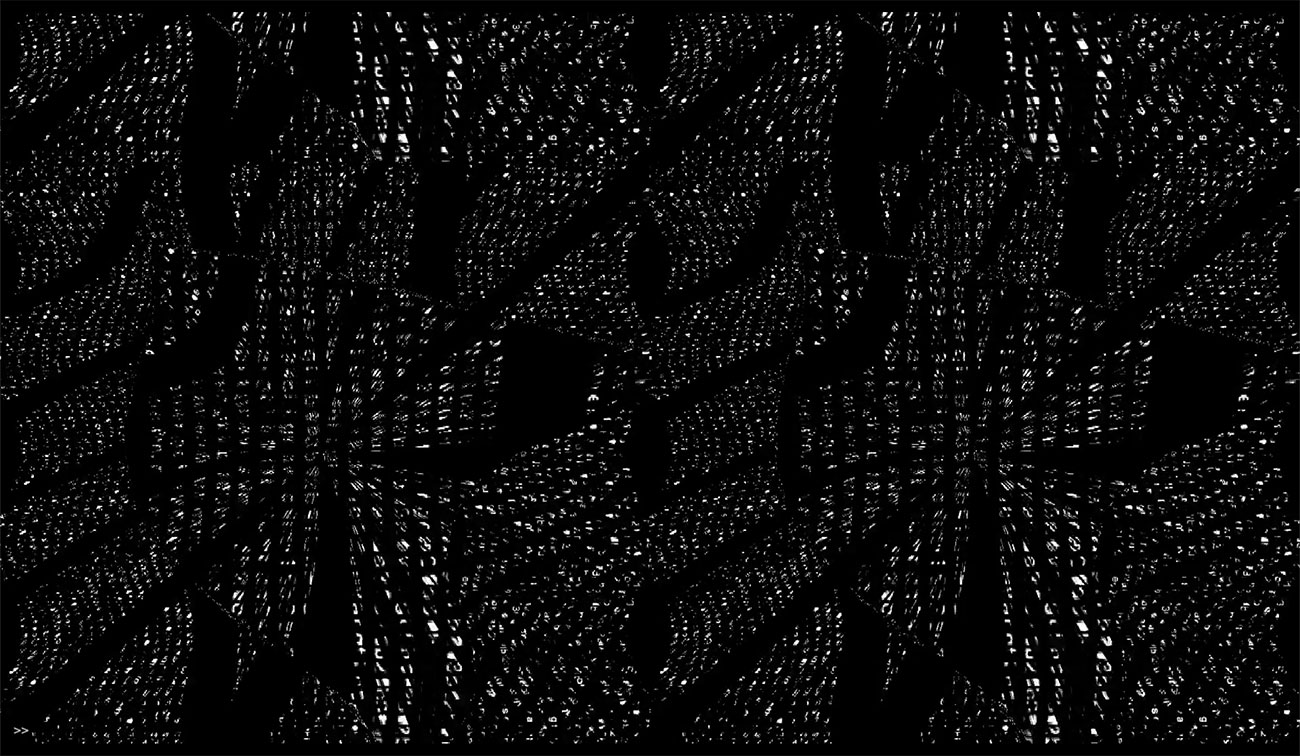
The captured visualizer for bigfish (YouTube).
Although we started with the same base ingredients as the previous video, we were able to discover more complex and (in our opinion) interesting kinds of motion for the bigfish visualizer, probably reflecting our increased comfort with Hydra.
Jim's cover art gave us a visual world that both mirrored our music and offered new depths for us to explore. We emerged from it with a greater willingness to dip into visual art in in the future. Hydra feels like a good fit for us, with its improvisatory livecoded workflow and its tendency to expose weird, organic flaws by applying simple rules.

In recent months, we've also joined the folks at Monster Planet in maintaining a little art space in Fremont, Seattle. (They assembled the space; we are newcomers.) We're just getting to know them, but we immediately noticed their enthusiasm for pairing visual and musical work. As we look toward our next project, we'll see where these new influences lead us.
We released Murmur on June 2, 2023. You can listen to it on Bandcamp, or watch the aforementioned videos on YouTube.
To reply you need to sign in.